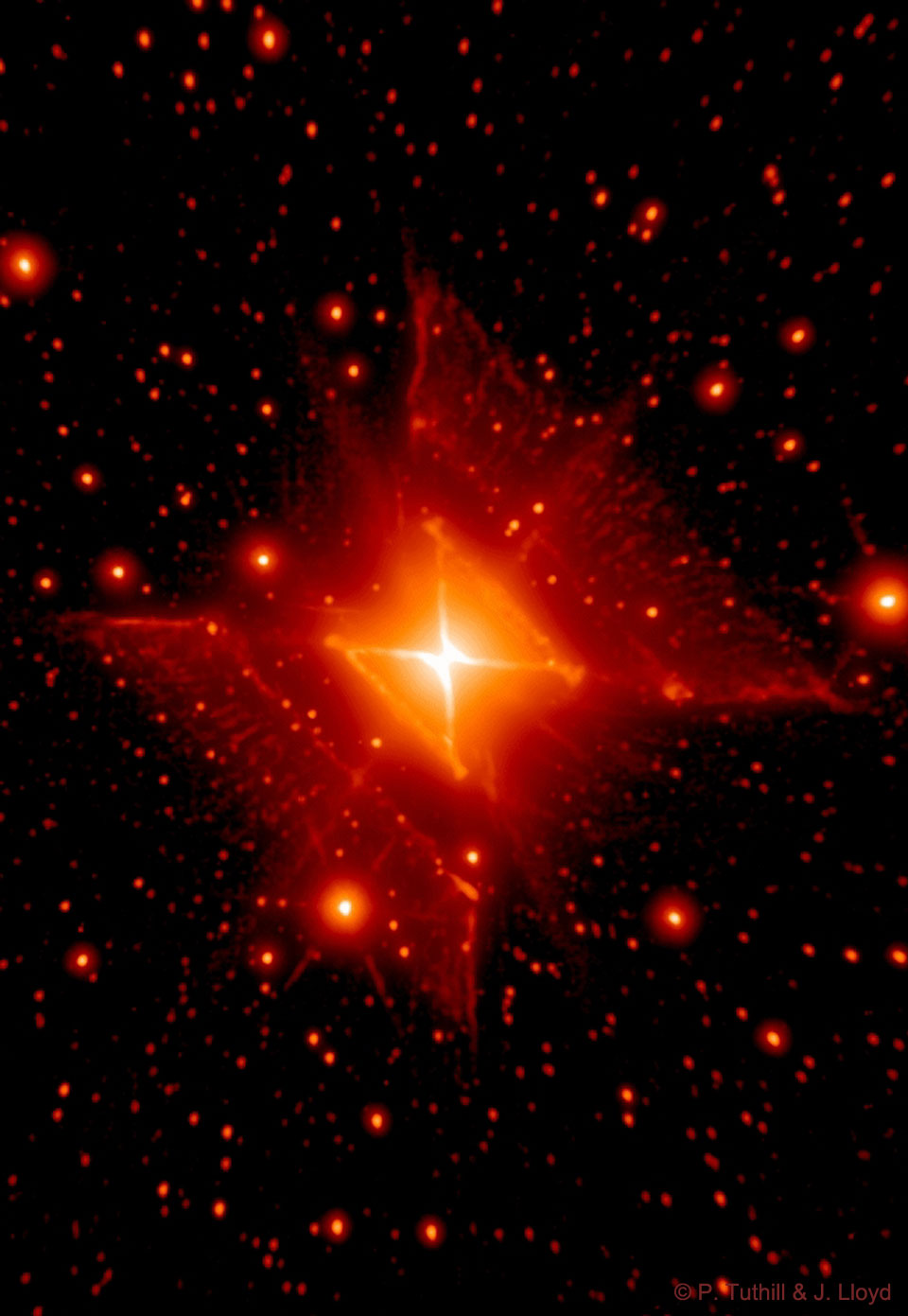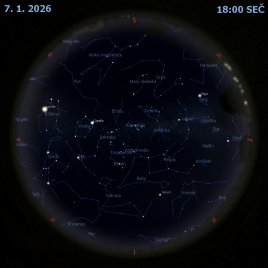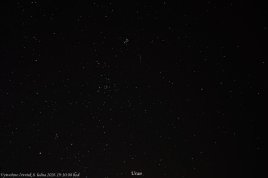Mlhovina Červený čtverec

Uznání a copyright: Peter Tuthill (Sydney U.) & James Lloyd (Cornell U.)
Jak mohla kulatá hvězda vytvořit čtveratou mlhovinu? Nikdo pořádně neví. Ve středu mlhoviny Červený čtverec je kulatá hvězda známá jako MWC 922 a je pravděpodobně součástí vícenásobného hvězdného systému. Snímek kombinuje infračervené expozice z Halova dalekohledu na Mount Palomaru v Kalifornii a z dalekohledu Keck-2 na hoře Mauna Kea na Havaji. Hlavní hypotéza o původu čtvercové mlhoviny praví, že centrální hvězda nebo hvězdy nějakým způsobem v průběhu pozdní vývojové fáze vyvrhly kužely plynu. V případě MWC 922 tyto kužely svírají téměř pravý úhel a jsou viditelné ze stran. Podpůrným důkazem pro hypotézu kuželů jsou radiální paprsky na snímku, které by mohly probíhat podél stěn kuželů. Vědci spekulují, že by kužely při pohledu z jiného úhlu vypadaly podobně jako gigantické prstence supernovy 1987A, což by mohlo ukazovat na to, že hvězda v MWC 922 může jednoho dne sama podobně explodovat jako supernova.
Seznam odkazů v popisu
- Wikipedia: Red_Square_Nebula
- NASA: Ask an Astrophysicist - Binary Star Systems
- Usyd.edu.au: The Red Square
- NASA: Infrared Waves
- CalTech.edu: The 200-inch (5.1-meter) Hale Telescope
- CalTech.edu: Palomar Observatory
- Wikipedia: California
- APOD: 1997-12-27 Keck: The Largest Optical Telescopes
- APOD: 2005-07-04 Panoráma z Mauna Kea
- Wikipedia: Hawaii
- APOD: 2017-01-08 IC 4406: Zdánlivě čtveratá mlhovina
- NASA: Stars
- Youtube.com: The Process of Triggered Star Formation
- Harvard.edu: A rotating fast bipolar wind and disk system around the B[e]-type star MWC 922
- Wikipedia: Right_angle
- Wolfram.com: Cone
- BoredPanda.com: Foto: Kočička v ochranném kuželu psa :-)
- APOD: 2013-05-21 Mlhovina Červený obdélník z Hubbla
- APOD: 2007-01-07 Tajemné prstence supernovy 1987A
- NASA: Supernova
NASA Official: Phillip Newman Specific rights apply. NASA Web Privacy Policy and Important Notices
A service of: ASD at NASA / GSFC & Michigan Tech. U.
Odkaz na originální APOD


